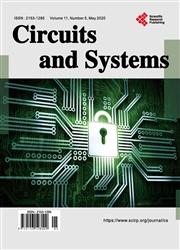Ride through Strategy for a Three-Level Dual Z-Source Inverter Using TRIAC
引用次数: 17
Abstract
A new ride through strategy is introduced in a three-level dual Z-source inverter, for isolation under semiconductor switching failure condition. Here the output will have no significant decrease in the amplitude and quality. Instead of diodes, the triacs are added to the inverter source ends, as it can perform a bidirectional power transfer also it can operate well in both low and high voltage operating conditions. The faulted part can be isolated by simply altering the firing pulses for turning on/off the triacs using the carrier based SPWM technique and resulting in a boosting output with zero common mode voltage. Consequently, it forms a common floating point or null point with a zero common mode voltage. It is experimentally verified by using MATLAB, and digital oscilloscope.利用可控硅的三电平双z源逆变器的穿越策略
在三电平双z源逆变器中引入了一种新的顺行策略,用于半导体开关故障情况下的隔离。这里的输出将没有显著的幅度和质量下降。而不是二极管,可控硅被添加到逆变器源端,因为它可以执行双向功率传输,也可以在低电压和高压工作条件下很好地工作。故障部分可以通过使用基于载波的SPWM技术简单地改变开/关三极管的发射脉冲来隔离,从而产生零共模电压的升压输出。因此,它形成一个公共浮点或零点与零共模电压。利用MATLAB和数字示波器进行了实验验证。
本文章由计算机程序翻译,如有差异,请以英文原文为准。
求助全文
约1分钟内获得全文
求助全文

 求助内容:
求助内容: 应助结果提醒方式:
应助结果提醒方式:


